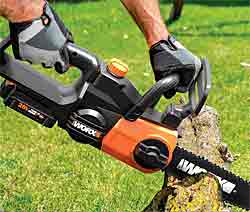
Improperly packed trailer fishtails and flips.
Towing a Tiny Home Safely
Moving a large trailer load must be done carefully and slowly. Here are some important tips for towing your tiny home safely.
Pack Your Belongings Carefully
- Your tiny home will experience a large amount of swaying and some major bumps, even on the smoothest road. Just think hurricane and earthquake. Remove all ceramic dishware from cabinets and pack in boxes separated by something like foam or newspapers.
- Secure chandeliers and other hanging items. Secure furniture by wedging it in place with other items. Make sure your appliances will stay in place as well. Make sure the refrigerator door is secured closed, and empty contents to coolers if they will be unpowered. If you have a stackable washer/dryer, strap securely to the wall.
- Remove pictures, art, and TV from the walls. Pack securely.
Distributing Weight Correctly is Essential for Towing a Tiny Home Safely
- 65% of the weight should be in front of the wheels to minimize fishtailing. Move everything (except the mattress) out of the lofts to lower the center of gravity.
Here is the short video showing the dangerous fishtailing caused by improper weight distribution:
- Tongue Weight: “Proper trailer tongue weight can make the difference between a safe trailer towing experience and a dangerous journey. If you don’t have enough weight on the trailer tongue, the trailer may be prone to swaying from side to side, making it difficult to control. Conversely, if you have too much weight exerted on the hitch ball, the force could overload the rear tires of the tow vehicle and push the rear end of the vehicle around.” (Quoted from the website in the link) Most experts agree that an acceptable tongue weight for any trailer is somewhere between 9 to 15 percent of the gross trailer weight (GTW)
- Pro Tip: Professional movers will add sand bags to your tiny home to get the weight distribution correct.
Plan Your Route
- If it’s not too long, drive it ahead of time looking for obstacles like low bridges, road construction, low hanging wires and branches, and pot holes.
- Take a long, non-conductive stick the height of your home. If a wire, traffic light, or other obstacle seems to low, stop and measure it with the stick. Do not touch electric lines! If you can’t tell the difference between electric and phone, network, cable, etc., call the utility company.
Get Permits
Just because your tiny home is within size limits doesn’t mean you won’t need permits. Each state and municipality has its own requirements. The city of Phoenix, for instance, will limit you to certain speeds, routes, and time of day. You must also know the exact weight of your home, so get it weighed. Oversized load permits are not expensive.
Check Your Tires
Many states will require load class “E,” not the “C” load class that come with most trailers. Also check for tire wear. We’re not talking about tread depth. Look for sun checking –tiny cracks or splits in the side walls caused by extended sun exposure; they are sure precursors to a blowout. If your tires are more than two years old, get new tires. Have at least two spares and a jack in the truck.
Grease the wheel bearings
Before starting out on your journey, have your wheel bearings greased. This is very important. If they are not greased well, they could seize up and cause catastrophic damage to the wheels, tires, and even start a fire. This can happen without your knowledge as you are traveling down the road.
Make Sure your Pulling Vehicle is Up to the Task
- This might require a coolant system flush, the addition of engine cooling, and a brake inspection.
- Make sure the trailer has electronic brakes and the brake pads are in good shape.
- Kent Griswold of Tiny House Talk rents a 20′ U-Haul truck if he needs to move his house. It has the towing capacity needed as well as the right hitch ball and trailer braking interface. See YouTube video below.
You will need temporary brake and turn signal lights on the rear of the structure. These can be rented if you move infrequently.
Your trailer will need to be registered & licensed, and have a lighted license plate.
If towing your tiny home yourself, check with the state you are registered in to find out if you will need a commercial drivers license. You can also ask them how to proceed with other states you might travel through.
Get Insurance!
Even when using a towing company, their load is not always fully insured. Check with your homeowners policy to see if it will remain valid in the new location, as well as in transit. They might have you install a GPS so they can track their insured property.
Jump to this page for more information about tiny house insurance: Tiny House Insurance
Take a Long Ladder and a Chain Saw
- You may be cutting low branches, especially on rural roads.
- A lot of damage can be prevented by putting a strong piece of material along the top front edge of the structure.
- Consider wrapping the lower half in several layers of plastic or Tyvek. Cover glass doors with wood.
Know your Clearance Height
Most tiny home are 13.5′ high. Some bridges, traffic lights, and gas station canopies are only 12′ high. Slow down for all overhead obstacles and proceed cautiously. When in doubt, pull over to the side of the road and get your non-conductive measuring stick out. You might feel silly doing this, but it’s better than risking an accident.
Prepare Your New Location for Your Arrival Ahead of Time
- If you are moving to private property, we strongly suggest a foundation and a tie-down system to prevent blow-over.
Check the Weather
Avoid traveling on snowy roads. If high winds are forecast, consider postponing until the weather clears.
Here is the video I mentioned earlier using a U-Haul truck to tow your tiny:
The right mirrors are required by law for safely towing your tiny home. See this page for mirror recommendations and best backing practices.



